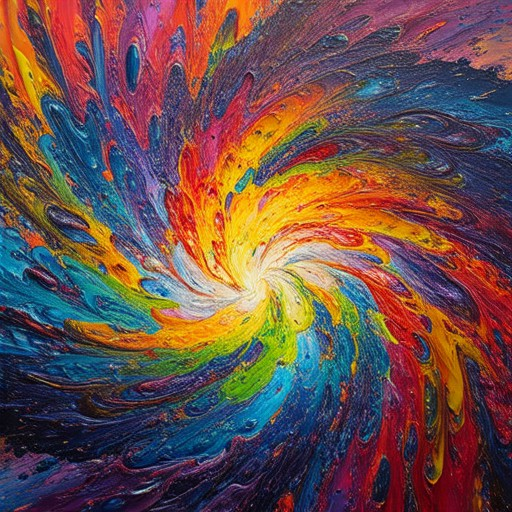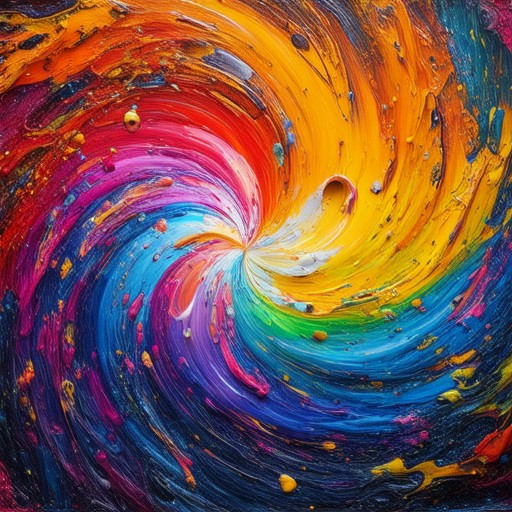Mixed media art projects offer a unique and dynamic way to explore your creative side, blending different textures, colors, and materials to create visually captivating artwork. Whether you’re a high school student looking to spark your imagination or an adult seeking a fresh artistic challenge, mixed media art provides endless possibilities for self-expression. By combining traditional mediums with innovative techniques, artists can craft pieces that stand out, making it a popular choice for those eager to push boundaries and experiment. In this guide, we’ll walk you through everything you need to know to start your own mixed media art project, from understanding the basics to discovering creative ideas and finding inspiration. Get ready to unlock your artistic potential and create something truly unique!
Key Takeaways
– Balance Personal Passion with Originality: Choose a mixed media art topic that aligns with your interests while offering a fresh perspective and staying feasible.
– Leverage Inspiration and Research: Explore your surroundings, visit museums, and engage with art communities to find unique ideas and trending themes.
– Experiment and Play: Don’t fear failure—try new techniques like collages or digital art to unlock unexpected creativity and innovation.
– Collaborate and Iterate: Join groups or classes to gain new insights and refine your ideas through shared experiences and constructive feedback.
– Stay Curious and Competitive: Explore current trends, volunteer for real-world projects, and network to uncover underexplored areas and keep your work cutting-edge.

What is a mixed media art project?
Mixed media art is a creative process that combines diverse materials, techniques, and disciplines to create unique and dynamic works of art. This versatile approach allows artists to explore a wide range of textures, colors, and styles, resulting in pieces that stand out for their innovation and complexity.
Common Types of Mixed Media Projects
- Collages : Combining paint, paper, fabric, and found objects to create layered compositions.
- Assemblages : Arranging everyday objects in meaningful ways to form sculptures or installations.
- Paintings : Incorporating textured surfaces, stencils, or embedded objects for added depth.
- Photomontage : Blending photographs with hand-painted elements to tell stories or convey emotions.
- Sculptures : Using mixed materials like clay, metal, or wood to create three-dimensional forms.
Why Mixed Media?
Mixed media art is celebrated for its ability to push boundaries and spark curiosity. It allows artists to experiment with different mediums, blending textures and colors in ways that traditional media alone cannot achieve. This flexibility makes it a favorite among artists who want to challenge themselves and explore new creative directions.
Tips for Success
- Start small: Experiment with a few materials before diving into larger projects.
- Research inspiration: Look at works by artists who use mixed media to gain ideas.
- Stay patient: Mixed media projects often require careful planning and multiple iterations.
By embracing the freedom of mixed media, artists can unlock new dimensions in their work and create something truly unique. Whether you’re a seasoned creator or just beginning, mixed media offers endless possibilities to express your artistic vision.
6 Major Recognized Types of Mixed Media Artwork
Mixed media art combines diverse materials and techniques to create unique and visually striking artwork. Below are six primary types of mixed media artwork, each offering a distinct approach to artistic expression:
- Collage : This art form involves assembling various materials, such as paper, fabric, paint, and found objects, onto a surface to create a layered effect. Collages often explore themes of texture, color, and narrative.
- Assemblage : Similar to collage, assemblage focuses on combining found objects, recycled materials, and everyday items to create three-dimensional sculptures. These works often have a raw, organic feel and tell stories through their components.
- Sculpture : While traditionally made of stone or metal, modern sculptures increasingly incorporate mixed media elements like resin, foam, or even household items. This allows for greater creativity and experimentation with shape and form.
- Installation Art : Large-scale, interactive pieces that are often temporary and placed in public spaces. Mixed media installations may include lighting, sound, or kinetic elements to engage the audience.
- Altered Book Art : Transforming old or unused books into works of art through painting, cutting, or adding three-dimensional elements. This technique allows for personal expression and reuses materials in innovative ways.
- Wet-and-Dry Media Creation : Combining traditional painting techniques with other media like spray paint, stencils, or ink to create dynamic, textured surfaces. This method emphasizes the interplay between different materials and finishes.
Each type of mixed media artwork offers artists a unique pathway to explore their creativity and push boundaries in visual expression. Whether you prefer the tactile nature of collage or the immersive experience of installation art, there’s a style to suit every artistic vision.

How to Start Mixed Media Art
Creating mixed media art involves combining different materials and techniques to create unique pieces. Here’s a step-by-step guide to help you get started:
- Choose Your Base Medium
- Start with a sturdy surface like a canvas or heavy paper.
- Apply a base layer using gesso to prime the surface for painting.
- Mix colors on a palette for easier blending.
- Experiment with complementary colors to enhance contrast.
- Create texture with a sponge or sandpaper for a rough finish.
- Incorporate torn paper or fabric for added depth and interest.
- Use scissors to cut out interesting shapes from magazines.
- Secure collage elements with a strong adhesive like Mod Podge.
- Find or create stencils for intricate designs.
- Apply paint through stencils using a brush or roller.
- Spray metallic paint for shimmering effects.
- Use a hairdryer to blow on painted areas for dimension.
- Protect your artwork with a clear varnish coat.
- Test varnish on a small area first to ensure compatibility.
By working in layers and experimenting with different techniques, you can create a unique mixed media piece that combines visual interest and personal expression. Happy creating!

How to Choose a Good Topic for an Art Project
Choosing a good topic for an art project involves balancing personal interest, originality, and feasibility. Here’s a step-by-step guide to help you select the perfect topic:
- Start with Personal Interest:** Choose a topic that excites you. Your passion for the subject will drive you to create meaningful work.
- Look for Unique Angles:** Aim for something original. While it doesn’t need to be completely new, it should offer a fresh perspective or combination of elements.
- Consider Feasibility:** Select a topic that aligns with your skills and resources. It should be challenging enough to push your boundaries but achievable within your timeline.
- Evaluate Relevance:** Choose a topic that resonates with current trends or has cultural significance. This adds context and purpose to your work.
- Explore Examples:** Look at successful projects and analyze what made them stand out. Consider how you can apply similar concepts to your own topic.
- Research Inspiration:** Draw motivation from art communities, exhibitions, and online platforms. Engage with tutorials and articles to discover new ideas.
- Stay Competitive Yet True to Vision:** Analyze competitors’ work but remain authentic to your style. Identify gaps in the market or underexplored areas you can tackle.
By thoughtfully considering these factors, you’ll find a topic that challenges you creatively while staying true to your vision and interests.
How to Get an Idea for an Art Project
Getting an idea for an art project starts with exploring your passions and surroundings. Here’s a step-by-step guide to sparking creativity:
- Explore Your Interests:** Look at objects, nature, or subjects that intrigue you. Sketching or documenting these observations can ignite inspiration.
- Experiment with New Techniques:** Try different mediums like mixed media, collage, or digital art to explore uncharted creative territories.
- Visit Museums or Galleries:** Expose yourself to diverse art styles and concepts that might inspire fresh perspectives.
- Join Art Groups or Classes:** Collaborate with others to gain new insights and motivation, while sharing your own ideas.
- Document Your Process:** Keep a journal or capture moments during your creation process to reflect on your progress and uncover hidden connections.
Remember, creativity thrives in playfulness and experimentation. Embrace the journey, and let your ideas evolve naturally!

How Do I Find a Good Project Idea?
To find a good project idea, start by exploring your personal interests and passions. Consider what excites you and aligns with your skills. Here’s a structured approach:
- Identify Interests : Reflect on hobbies or subjects that interest you, whether it’s art, technology, or community service.
- Research Trends : Look into current trends and popular topics online to see what’s gaining attention. Platforms like Pinterest, Instagram, and YouTube can offer inspiration.
- Explore Online Resources : Utilize platforms like Udemy or Coursera to learn new skills such as graphic design or digital marketing.
- Volunteer : Engage with non-profits to gain hands-on experience and insight into real-world applications of your skills.
- Network : Attend local events or join online communities to connect with like-minded individuals who can share knowledge and opportunities.
- Brainstorm Techniques : Use mind mapping or other brainstorming methods to visualize and explore potential ideas.
- Set Goals : Define your objectives to stay focused and track progress with measurable milestones.
- Seek Feedback : Share your ideas with peers or mentors to receive constructive criticism and new perspectives.
- Stay Curious : Keep exploring and remain open to new experiences that might spark innovative ideas.
By following these steps, you can uncover a project idea that matches your interests and keeps you motivated.




0 Comments